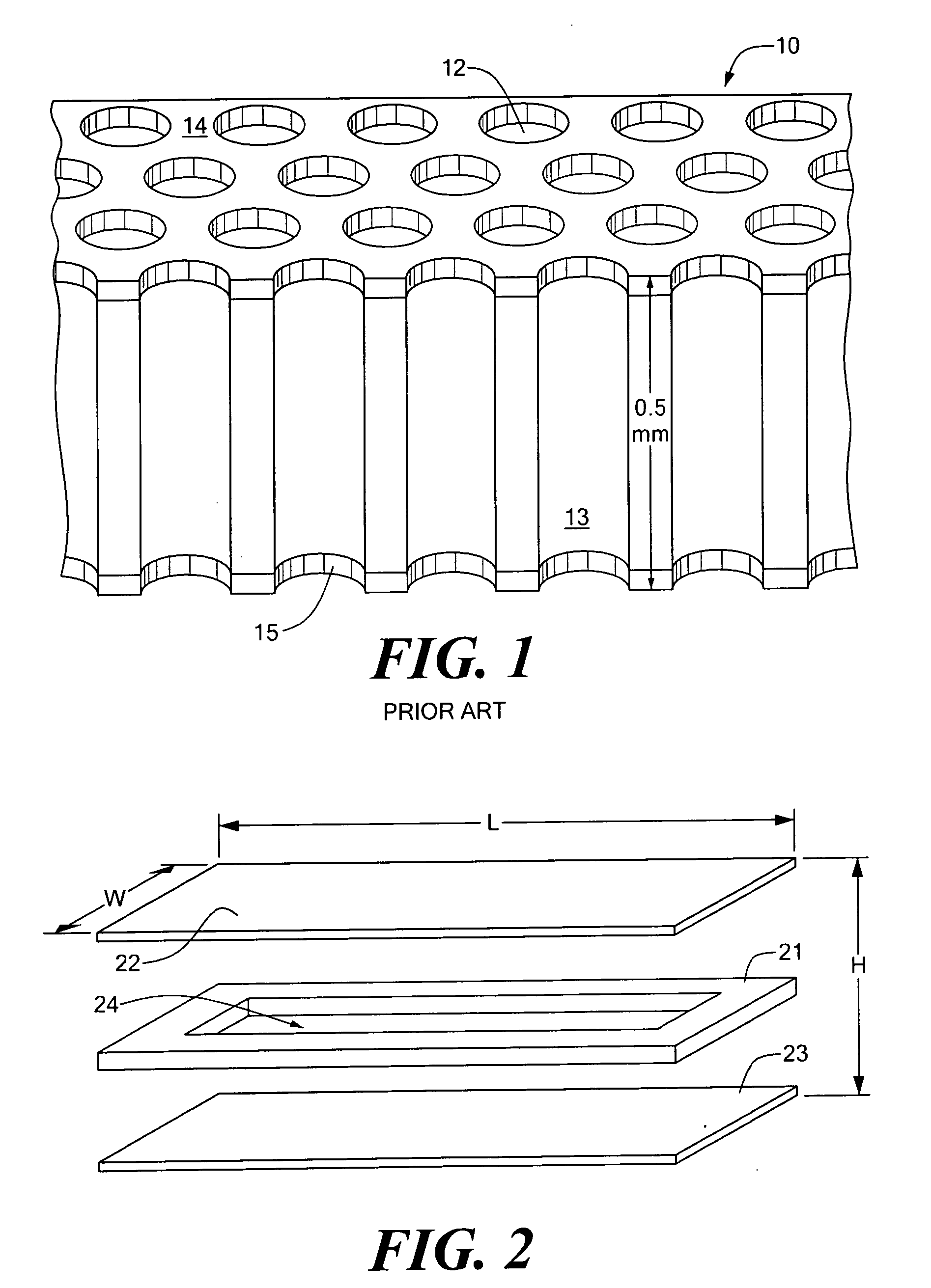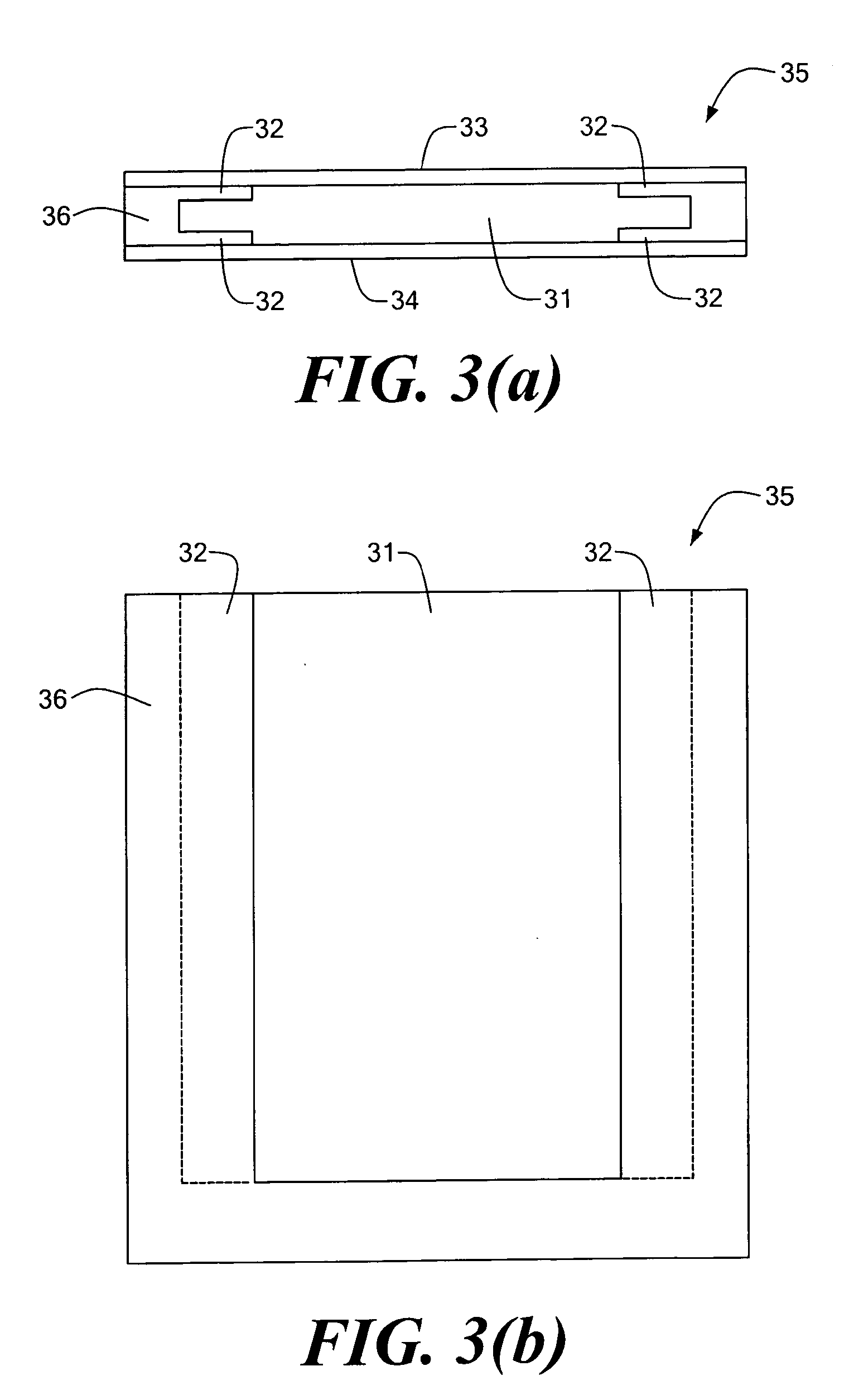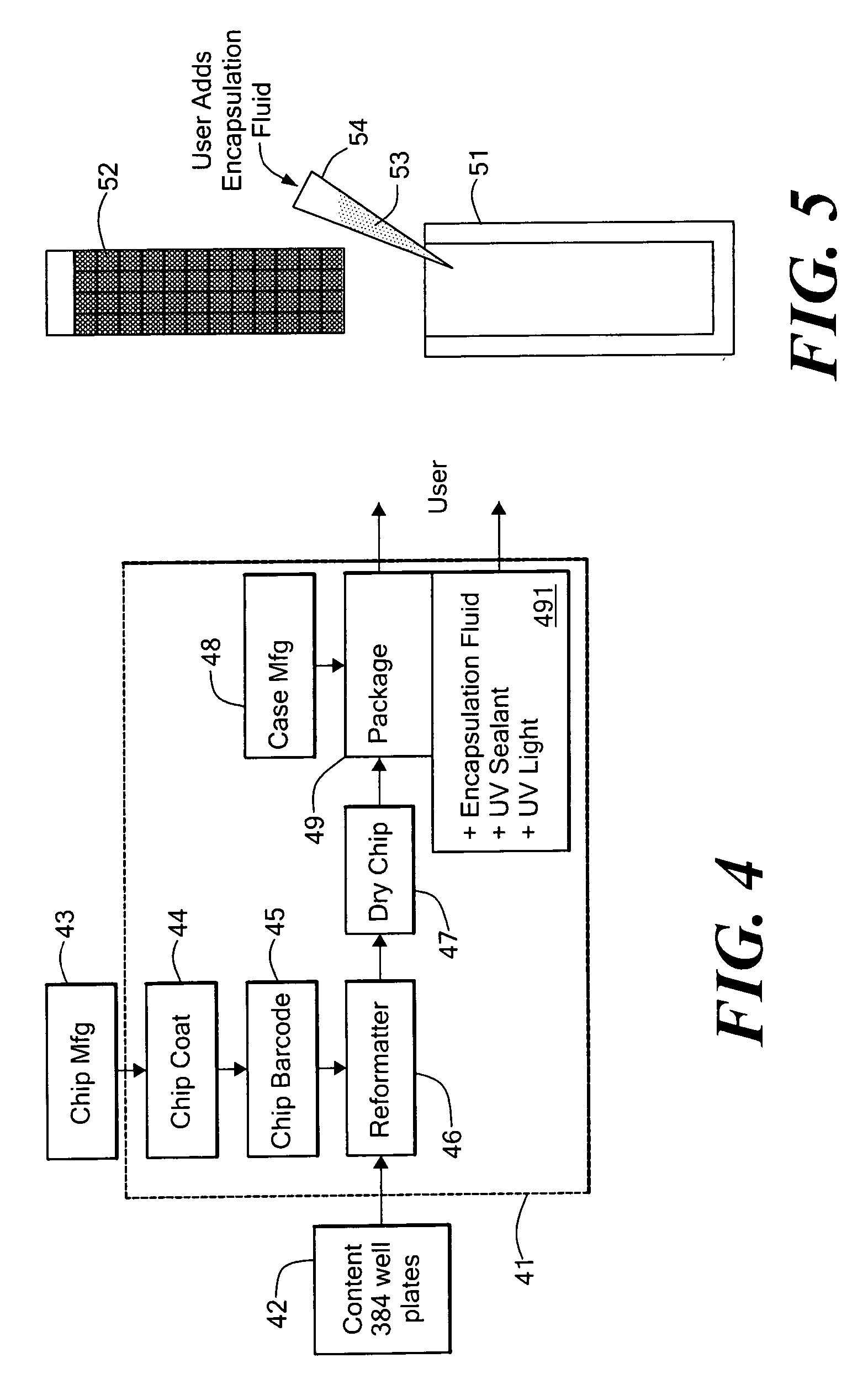Thermal Cycler for Microfluidic Array Assays
a microfluidic array and cycler technology, applied in the field of devices and methods for assaying samples, can solve the problems that the pcr to achieve higher throughputs with conventional technology is neither cost effective nor efficient, and achieve the effect of preventing fogging and promoting sample spread
- Summary
- Abstract
- Description
- Claims
- Application Information
AI Technical Summary
Benefits of technology
Problems solved by technology
Method used
Image
Examples
Embodiment Construction
[0082]Definitions. As used in this description and the accompanying claims, the following terms shall have the meanings indicated, unless the context otherwise requires:
[0083]“Target” may be any molecule, nucleic acid, protein, virus, cell, or cellular structure of interest.
[0084]“Microfluidic array” refers to any ordered structure for holding liquid samples of 1000 nanoliters or less.
[0085]Embodiments of the present invention are directed to devices and methods for assaying sample liquids using a microfluidic sample array. For example, various techniques for encasing, loading, stacking, thermal cycling and imaging of a microfluidic sample array are presented. Other embodiments of the present invention include adapting individual through-holes of the sample array for capture, chemical processing of captured targets, and / or multi-functional processing of liquid samples. Various examples and embodiments are discussed in detail below.
[0086]Encased Microfluidic Array
[0087]FIG. 2 is an e...
PUM
| Property | Measurement | Unit |
|---|---|---|
| volume | aaaaa | aaaaa |
| thick | aaaaa | aaaaa |
| thick | aaaaa | aaaaa |
Abstract
Description
Claims
Application Information
 Login to View More
Login to View More - R&D
- Intellectual Property
- Life Sciences
- Materials
- Tech Scout
- Unparalleled Data Quality
- Higher Quality Content
- 60% Fewer Hallucinations
Browse by: Latest US Patents, China's latest patents, Technical Efficacy Thesaurus, Application Domain, Technology Topic, Popular Technical Reports.
© 2025 PatSnap. All rights reserved.Legal|Privacy policy|Modern Slavery Act Transparency Statement|Sitemap|About US| Contact US: help@patsnap.com



